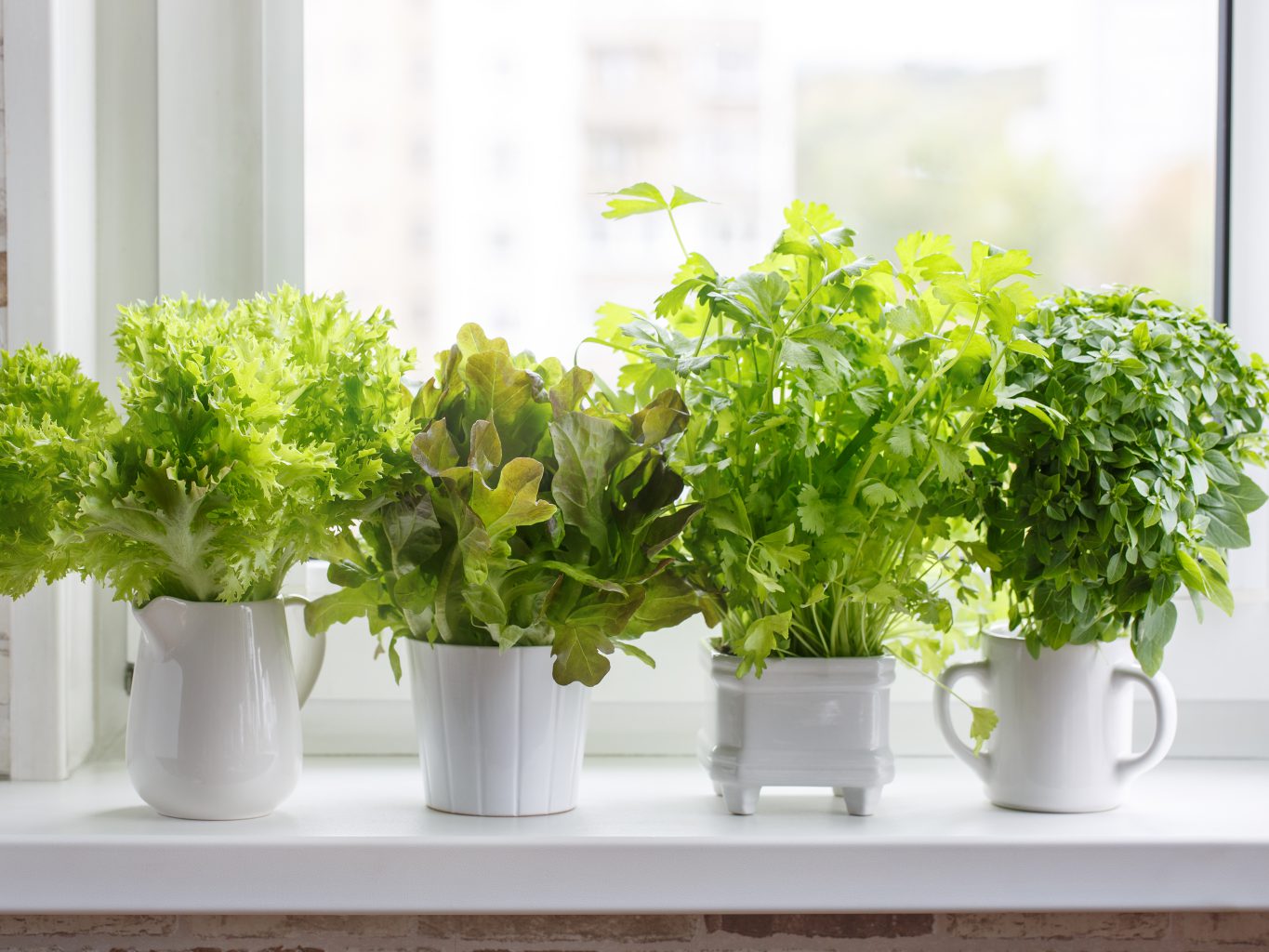Culinary gardens can be grown in the winter. Although, unless you have a greenhouse or grow plants indoors, you will be limited on what can survive. The easiest things to grow are salad greens, spinach, kale and herbs. You can grow them from seeds or plants.
If you want to grow winter greens outside and don’t have a greenhouse, you can create a mini greenhouse with a little creativity. One idea that requires little effort is to use a clear plastic storage tub. Place the lid bottom side up on a flat surface in full sun, lay a bag of garden soil flat on top and then cut a hole in the middle of the bag using a utility knife. Be sure to leave wide edges on top of each side so soil won’t fall out. If any of the soil is compacted in the bag, loosen it up with your hands and scoop out excess soil to keep it below the cut edges. The idea is to prevent soil from washing over the edges when you water.
Next, spread a packet of seeds over the soil and cover by gently rubbing your hand over the top. Sprinkle some spare soil lightly over the seeds if they are still visible. Salad green seeds are so small they should not be buried deeply or they won’t germinate. Gently use a watering can, carefully avoiding washing the seeds away. Last, place the plastic tub on top of the bag to create an inexpensive greenhouse. You should only need to water once per week after germination. If you see condensation inside the tub, prop one end open a few inches until the water dissipates.
If you live in the high country, it will be too cold and snowy for this makeshift greenhouse to work. Fortunately, you can grow lettuce, spinach and kale in small pots on your kitchen counter along with all your herbs. You can even mix the greens in one large pot for a beautiful display.
Growing herbs indoors is not as difficult as you might think. If you don’t have the time to grow from seeds, which initially requires more attention, you can find a wide variety of plants at your garden store. A basic herb garden contains parsley, basil, sage, rosemary, thyme, mint and oregano.
Most herb plants available to purchase can be kept in their pots unless they are root bound. You can also create a decorative display by mixing different herbs in larger containers.
Use well-draining soil and cover up to the base of the plants where roots begin. Be sure to label individual plants if you are not familiar with their leaves. You can enjoy herbs longer if you prevent them from getting tall and spindly. Encourage horizontal spread by crowding the plants more than you normally would and pinch off leaves at the top of the stems. It’s easy to give herbs the attention they need when placed in the kitchen where they are easily accessible while cooking.
Gardener Vicki Spencer has an eclectic background in conservation, water, natural resources and more.

